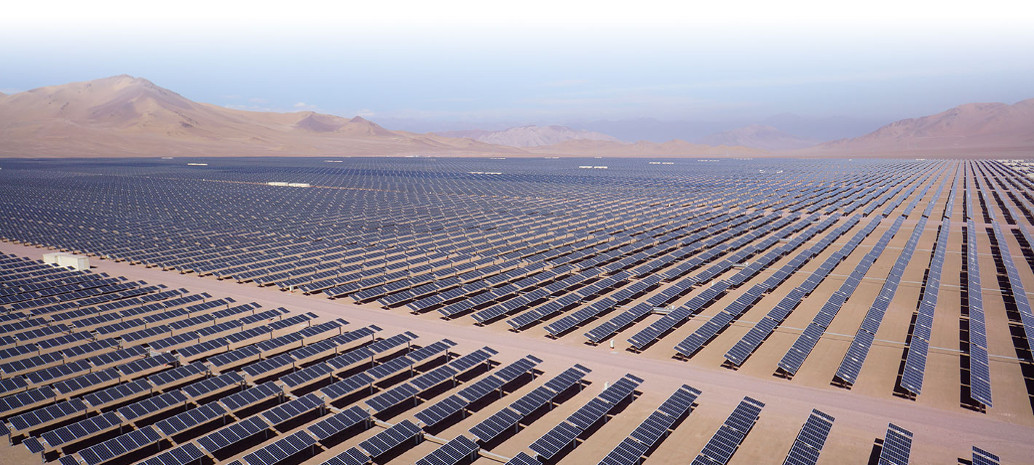The United States has had a strong presence in Latin America since the 19th century, when under the “Monroe Doctrine” the nation made it official policy to intervene in the affairs of its southern neighbors.
And while this intervention has not always been welcome by said nations, in the last decade the form of assistance took a decidedly benevolent turn. Starting in 2012 U.S. government agencies began financing the construction of the first very large solar plants in Chile, and in the process kick-started the region’s utility-scale solar market.
The principal actor in this was the Overseas Private Investment Corporation (OPIC), which under former U.S. President Barack Obama loaned $887 million to build five large solar projects and one run-of-rive hydro plant in Chile in 2013 and 2014.
However, now these plants are having difficulty paying back the loans, which has spurred an audit by OPIC’s Office of the Inspector General. And while this audit began last year, it was first reported yesterday by Reuters. Three of the five plants which received loans – the Salvador, Luz del Norte and San Andrés – are restructuring their debts.
Both Etrion, the majority owner of the Salvador plant, and First Solar, which owns Luz del Norte, have reached restructuring agreements with OPIC. Etrion is postponing debt payments for one year, and First Solar has extended the maturity of its loan to 2037. It is unclear what stage the restructuring of the San Andrés loan is in.
At the core of the problem is a risky system of selling the power. American developers such as SunEdison, SunPower and First Solar had joined Spanish companies in flocking to Northern Chile, due to the excellent solar radiation and the possibility of good returns due to high wholesale prices for electricity at the Northern end of Chile’s Central Grid (SIC).
Two of the plants which are restructuring, the San Andrés and the Salvador, were built as merchant plants, meaning that they sell at least half the power they generate directly on the spot market. And while merchant power is an established business model in the conventional power industry, pv magazine staff is only aware of five solar plants that have used this model to date, including San Andrés and Salvador.
Selling power on the spot market can be much more lucrative in the short run than selling power under fixed-price power contracts. It also involves considerable risk. And as more projects have been built in Northern Chile, they have depressed wholesale power prices in the region, and in some locations prices have fallen to zero during the period of solar production during the day.
It is clear that this is having an impact on the Salvador plant. In its fourth quarter 2016 results, Etrion wrote down the value of the Salvador plant by $76 million, citing a “sharp decline” outlook for long-term power prices in the Chilean market.
Popular content
First Solar’s Luz del Norte is connected to a node which is reporting recurring zero prices during the day. This situation could be relieved with additional transmission, which is planned for the region but is late in coming online.
Bloomberg New Energy Finance (BNEF) notes that multiple nodes at the northern end of Chile's central grid are reporting recurring zero prices during the day, and also reports curtailment of solar plants. BNEF also says that it is not clear if new transmission projects to connect the central and northern grids will solve all problems.
“The market is still waiting to see if these two transmission lines will be sufficient to solve the problems of spot price and curtailment,” BNEF South America Analyst Ana Verena Lima told pv magazine.
BNEF notes that this solar was deployed at a time when forecasts predicted higher growth of electric demand. “A few years ago the country was expecting a much higher demand for electricity than it has seen,” notes Verena Lima.
And while OPIC has traditionally returned a positive balance for U.S. taxpayers, the loans to these plants may be an exception. The Luz del Norte credit agreement alone has an outstanding balance of $181 million, and according to Reuters the agency could lose up to $240 million. OPIC has told Reuters that it expects to recover the full amount, but notes that timelines for repayment have been postponed.
The U.S. government’s concern does not appear to stop at the potential loss of dollars. The Inspector General is not only looking at these individual loans, but also the “factors OPIC used to assess and approve its energy projects in Chile”.
This article was modified on May 30 at 23:00 CET to include commentary by BNEF.
This content is protected by copyright and may not be reused. If you want to cooperate with us and would like to reuse some of our content, please contact: editors@pv-magazine.com.


Are any of the affected solar plants considering adding storage to shift some of that energy to more profitable times?
To my knowledge, no. However, I have generally found that the owners of these projects are not eager to talk about them.
The interconnector between the northern and central grids is due for completion in the second half of thus year, which should go a long way to restoring a more normal market.